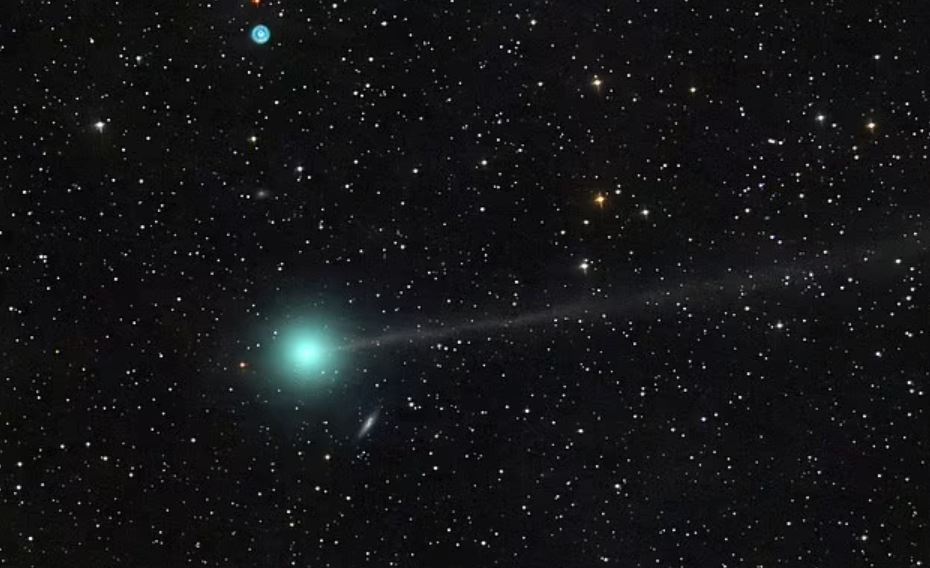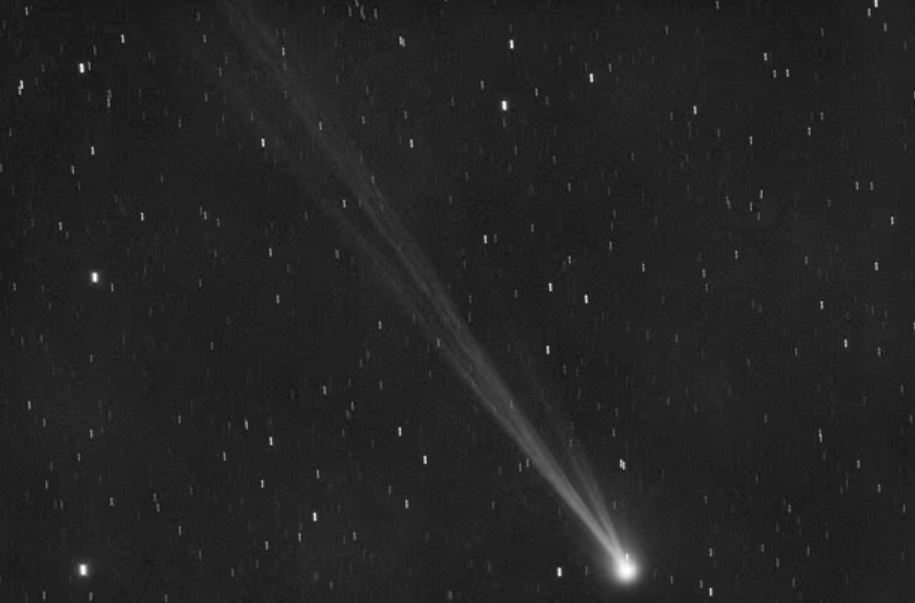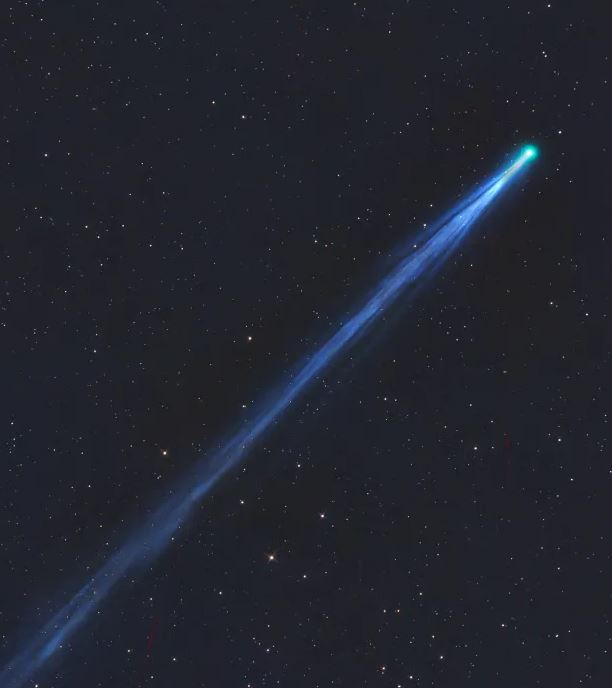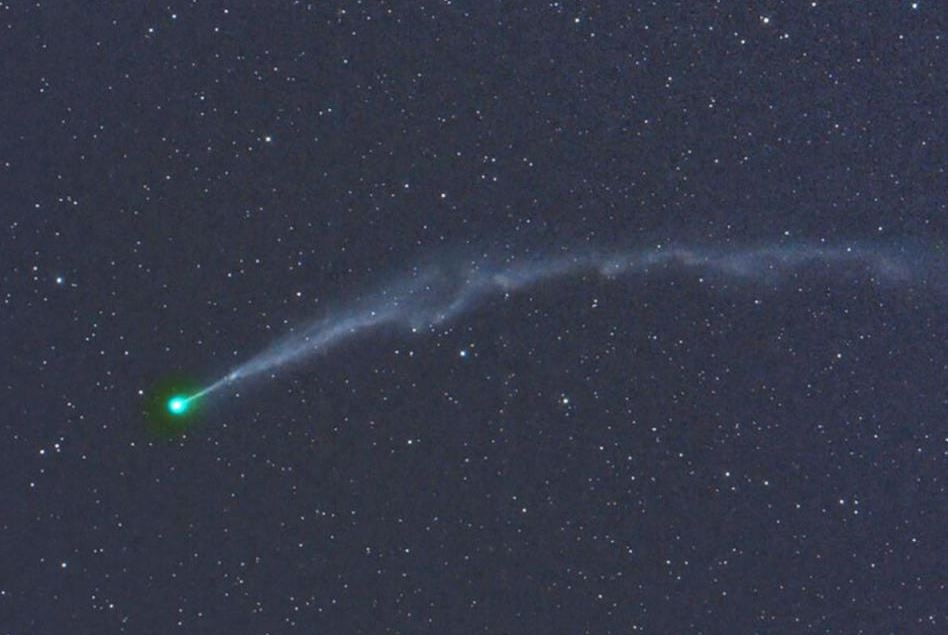Named Nishimura after the Japanese photographer who first captured it on August 11. It can be spotted by its greenish luminance as it traverses the northeastern hemisphere, visible from various parts of the world, including the US and the UK.

Astronomers recommend that skywatchers aim to catch this rare celestial event by looking towards the vicinity of the Leo constellation approximately 90 minutes prior to sunrise.
The comet last visited about 435 years ago, a decade or two before Galileo invented the telescope. The next opportunity to view it from Earth will not arise until 2458.

Traveling through space at an incredible speed of 240,000 miles per hour, the green comet is currently visible in the sky, but it is expected to shine even brighter on Tuesday and the following days.
It will pass closer to Earth than the moon, which sits 238 855 miles miles from our planet.
Comets consist of a nucleus, a solid core composed of rock, dust, and frozen gases such as carbon dioxide and methane.
In the ice ball, there is a molecule called dicarbon, which produces a green glow when it breaks down.
While Nishimura can be seen with the naked eye, using binoculars or a telescope will enhance the viewing experience.

As it continues its journey through the solar system, the comet will come closer to the sun in about September.
However, according to Paul Chodas, manager of NASA's Center for Near-Earth Object Studies, there is a possibility that it could disintegrate when it gets too close to the sun.
Italian astronomer Gianluca Masi, the founder of the Virtual Telescope Project, emphasized in an email that the upcoming week offers the last, feasible chances' to observe the comet from the Northern Hemisphere before it becomes obscured by the sun's glare.

'The comet looks amazing right now, with a long, highly structured tail, a joy to image with a telescope,' he said.
The comet has since been named after Hideo Nishimura, its discoverer, and was spotted using a telephoto lens attached to a Canon camera when it was approximately 93 million miles away from the sun.
Amateur astronomers have diligently followed the journey of this rare green comet since its initial discovery in mid-August.
Astronomy enthusiasts can look forward to a peak viewing opportunity on September 17 when the comet reaches its perihelion, the point closest to the Sun in its orbit. Beyond this date, it will become considerably more challenging to observe, so you might want to seize the chance.






